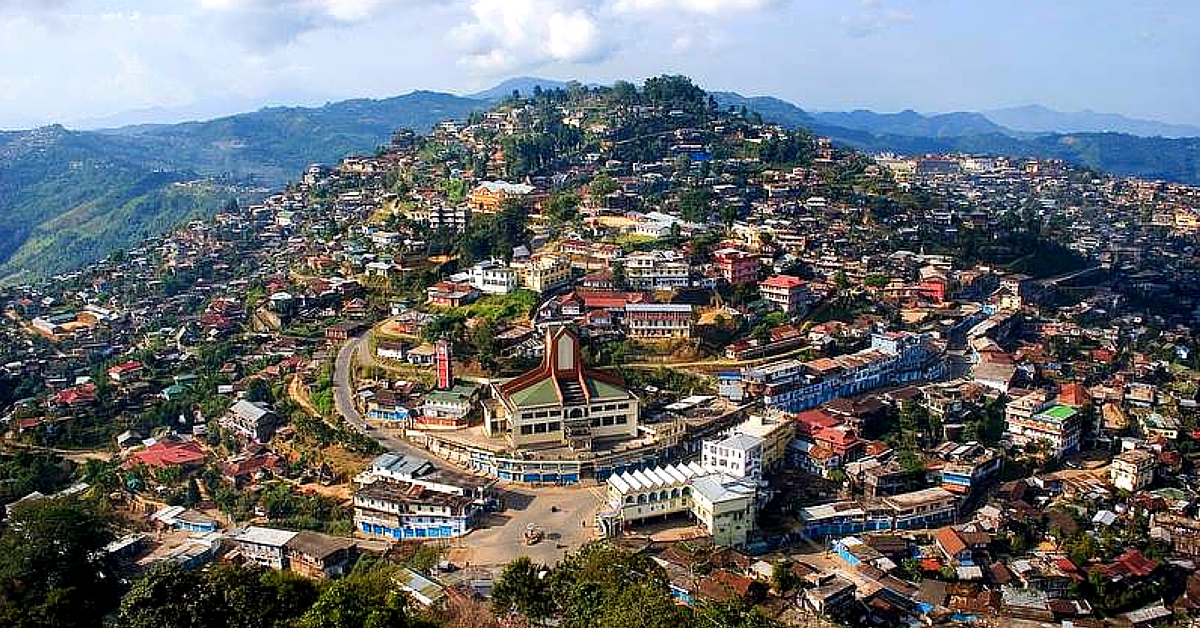Kohima or the land of the “Angami Naga” tribe and the capital of Nagaland is a beautiful tourist destination and is located in the eastern boundary of the Himalayas. Kohima was the name officially given by the British as they could not pronounce the original Angami name “Kewhima or Kewhira” which means “the land where the flower Kewhi grows”. This place is popular for its natural beauty and cultural simplicity. The friendly nature of the locals and the overall laid back lifestyle is what makes Kohima an ideal holiday destination. Dense forests, colorful orchids, and rhododendron adds to the exotic beauty that this region possesses. So if you are looking to enjoy true natural beauty along with a relaxed lifestyle then “Kohima” is certainly a destination for you.
Read More: 6 VISIT WORTHY NORTHEAST INDIAN HILL STATIONS
How to reach Kohima?
[put_wpgm id=38]
Kohima Map
By train:
The nearest railway station to Kohima is in Dimapur. The Dimapur railway station frequently receives trains from Guwahati and Kolkata.
By road:
A number of Nagaland State Road Transport bus services are available from Dimapur to Kohima. Apart from Dimapur there are also bus services available from places like Guwahati, Mizoram, Arunachal Pradesh, Manipur, Meghalaya, and Tripura to Kohima. Dimapur and Guwahati are the starting points located in close proximity to Kohima.
a. How to reach Kohima from Dimapur : The shortest route to reach Kohima from Dimapur is via NH29as depicted in the map above. Alternatively, click on the Google Maps link here to view on Google Maps.
b. How to reach Kohima from Guwahati : The fastest route from Guwahati to Kohima via NH29 and NH27 and the route map is depicted above. Alternatively, click on the Google Maps link here to view on Google Maps.
By flight:
The closest airport to Kohima is in Dimapur. The Dimapur airport receives regular flights from Guwahati and Kolkata. Taxi service to Kohima is available from Dimapur airport.
Climate and the best time to visit Kohima
Kohima enjoys a typical “subtropical” climate with pleasant summers and extremely cold winters. The temperatures during summer range (June to August) between 16 degrees to 35 degrees. While the temperatures during winter (December to February) drops down to sub zero with snowfall on higher altitudes. This place does not have a specific monsoon season and receives heavy rainfall during summers. So the best time to visit Kohima is from October to May.
Places To Visit Around Kohima
Kohima Zoo: It is one of the biggest attractions here. Home to the state bird of Nagaland, the rare Tragopan bird, the zoo is located uphill. The slopes of the hill are the natural habitat for a variety of animals. One will come across Blythe’s Tragopan and golden langurs here.
Japfu Peak: The Japfu peak is considered to be the second highest peak in Nagaland. It offers an amazing trekking opportunity to the outdoor enthusiasts. The view from the top is simply exhilarating.
Kohima Museum: At this museum, one will get the chance to take a close look of some of the rare Naga artifacts. The traditional attire, the clan motifs, the traditions, and practices, as well as the dialects, are beautifully displayed here.
Kohima War Cemetery: Located on the Garrison Hill, it is looked after by the Commonwealth Graves Commission.
Catholic Church on Aradhurah Hill: This church offers a great view of Kohima.
Intanki Wildlife Sanctuary: This sanctuary shelters a variety of animals like the rare Hoolok gibbon, wild buffaloes, sloth bear, barking deer, flying squirrels, etc.
Other places of tourist interest in close proximity to Kohima include The Dzukou valley (which is located within a short distance from the town) where one can observe a hue of red and white rhododendron, wild flowers, and lilies by the end of winter and spring. Mokokchung is another interesting place, the home of the AO tribe of the Nagas.
Accommodation – Hotels, Resorts and Home Stays in and around Kohima :
Click on the link here to check out the places to stay near Kohima, Nagaland on Google Maps.
Also Read: CHERRAPUNJI – FACTS ABOUT THE WETTEST PLACE ON PLANET EARTH

